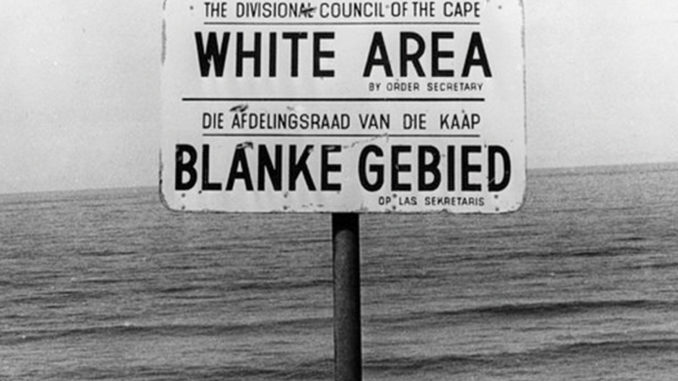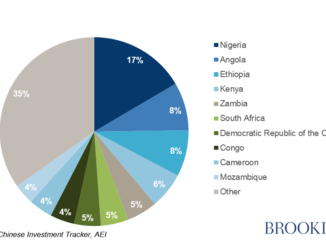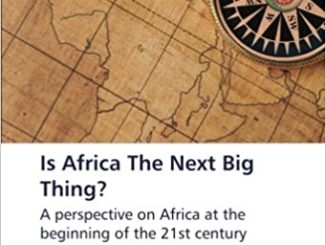
In order to fully understand the rise of apartheid (Afrikaans: apartness) and its ensuing polices, it is necessary that the history of South Africa prior to 1948 first be comprehended. For many years this area, once known as the Boer Republic, had long been ruled by whites who had come from Europe. Up until 1899, this area was ruled by Afrikaans-speaking Dutch settlers. When the British Empire invaded in 1899, the Boer republic consisted of two independent states: the South African Republic, and the Orange Free State.
This Second Boer War, which lasted nearly three years, would end in a British victory. Both Boer republics were annexed by the British Empire and were subsequently incorporated into the Union of South Africa in 1910. In spite of the fact that they had once been enemies, Great Britain and the Union of South Africa became allies and joined forces against the German Empire in World War I. Former generals in the Boer War against Great Britain, Prime Minister Louis Botha and Defense Minister Jan Smuts, were now both members of the Imperial War Cabinet
Defense Minister Smuts was a member of the United Party. In 1948 his party was defeated by the Reunited National Party (RNP) headed by Protestant cleric Daniel Malan, who ran on a policy of apartheid. The RNP joined forces with the Afrikaner Party and later merged to form the National Party (NP). Malan became the prime minister, and thus was started the era of apartheid.
Apartheid legislation in reality was not anything new, as it was in fact based on former British laws that Great Britain had put into place after the Anglo-Boer war in an effort to keep the different races segregated. Using the British laws as a model, the NP leaders reasoned that South Africa was not a united nation, but rather four nations separated along racial lines. While some of their reasoning might seem strange to us today, they were in fact in line with most beliefs of the day that tended to not only look down on interactions between different races, but in many cases deemed them immoral, or even in certain situations illegal.
Although there were several sub-groups designated, the country was divided into four main racial groups: whites, blacks, Indians, and colored. The whites were either immigrants from or descendants of English and Afrikans speaking immigrants from Europe.
There were two types of apartheid laws instituted: grand apartheid and petty apartheid. Grand apartheid was the separation of peoples along racial lines. The grand apartheid laws separated the cities into small townships where people were moved to based on skin color. All interaction between the races was illegal. Petty apartheid laws were those dealing with everyday places such as beaches, clubs, restaurants, and the like.
An article on the website Stanford.edu states “that with the enactment of apartheid laws in 1948, racial discrimination was institutionalized. Race laws touched every aspect of social life, including a prohibition of marriage between non-whites and whites, and the sanctioning of “white-only” jobs.” (History) The first law was the Prohibition of Mixed Marriages Act which made it a crime for people to marry outside their race.
The second such law was the Population Registration Act of 1950 which required people to carry an identification card indicating which racial group they belonged to.
In 1950 the Group Areas Act was passed. This apartheid law officially sanctioned the separation of the races into areas based solely on race. Forced removal was often implemented.
According to an article on the website africanhistory.about.com, the Reservation of Separate Amenities Act 0f 1953 was “forced segregation in all public amenities, public buildings, and public transport with the aim of eliminating contact between whites and other races. “Europeans Only” and “Non-Europeans Only” signs were put up. The act stated that facilities provided for different races need not be equal.” (Boddy-Evans)
The Suppression of Communism Act of 1950 banned the South African Communist Party and any other party that subscribed to any form of Communism. The law was written in such a broad sense though, that any form of government that opposed apartheid could be banned regardless of whether it had anything to do with communism or not.
The Bantu Education Act of 1953 created a system of schools and universities that were tailored for individual races. With this type of educational system, it made it impossible for blacks to become anything other than common laborers.
While interracial contact in sport was frowned upon, there were no official laws separating the races in sports.
Other nations, by way of the United Nations (UN) began to show concern about the apartheid laws in 1946, but it was deemed that this was an internal affair better left to the care of South Africa. Finally, in 1960, after the Sharpeville Massacre, in which 69 protestors were killed by police, the UN agreed on a concerted action against apartheid. It was demanded that apartheid and racial segregation be eliminated in South Africa.
In 1962 the UN passed Resolution 1761 which formally condemned the South African policies. Resolution 181 was passed in 1963 calling for a voluntary arms embargo against South Africa. Apartheid became officially illegal and was classified as a crime against humanity, open to prosecution to any perpetrators. In 1977 Resolution 181 was changed from a voluntary to a mandatory arms embargo.
During the 1980s, many leaders tried to reform apartheid in an effort to quell several uprisings, but to no avail. It was determined that the only way to solve the problems in South Africa was to repeal the apartheid laws and in 1990 then President Frederik Willem de Klerk began negotiations to repeal them. Although all the apartheid laws were repealed in 1990, the recognized end of apartheid was not until 1994 when South Africa held its first non-
racial general elections which were won by the African National Congress under the leadership of Nelson Mandela, who only 4 years prior had been released from prison after serving 27 years of a life sentence for leading protests against apartheid.
Unless otherwise stated, PONIREVO and/or its licensors DO NOT own any intellectual property rights in the website and material on the website. Majority of the site’s content has been scraped and auto posted by a third party artificial intelligence program —– PONIREVO Creation Team.
Proudly WWW.PONIREVO.COM



